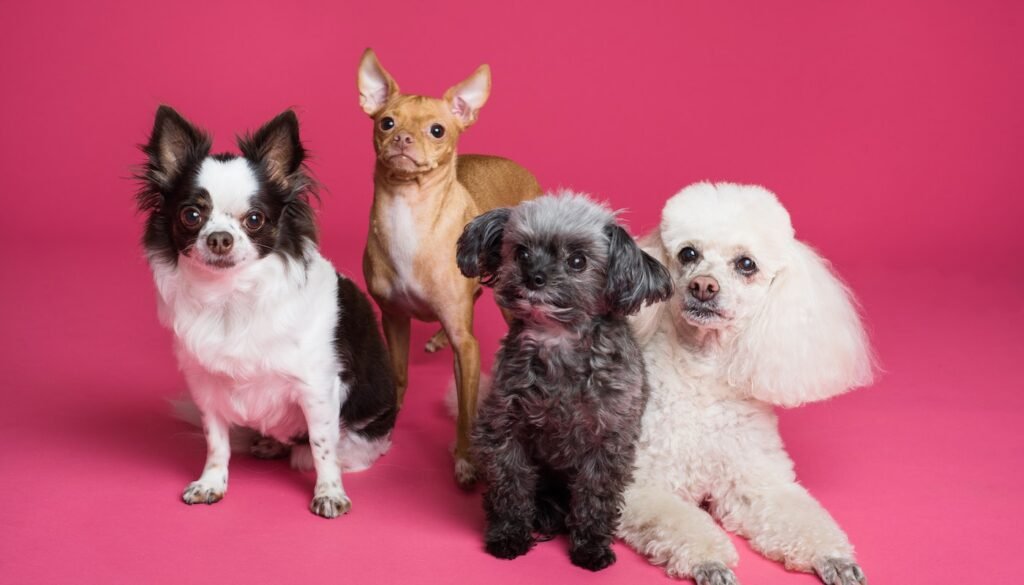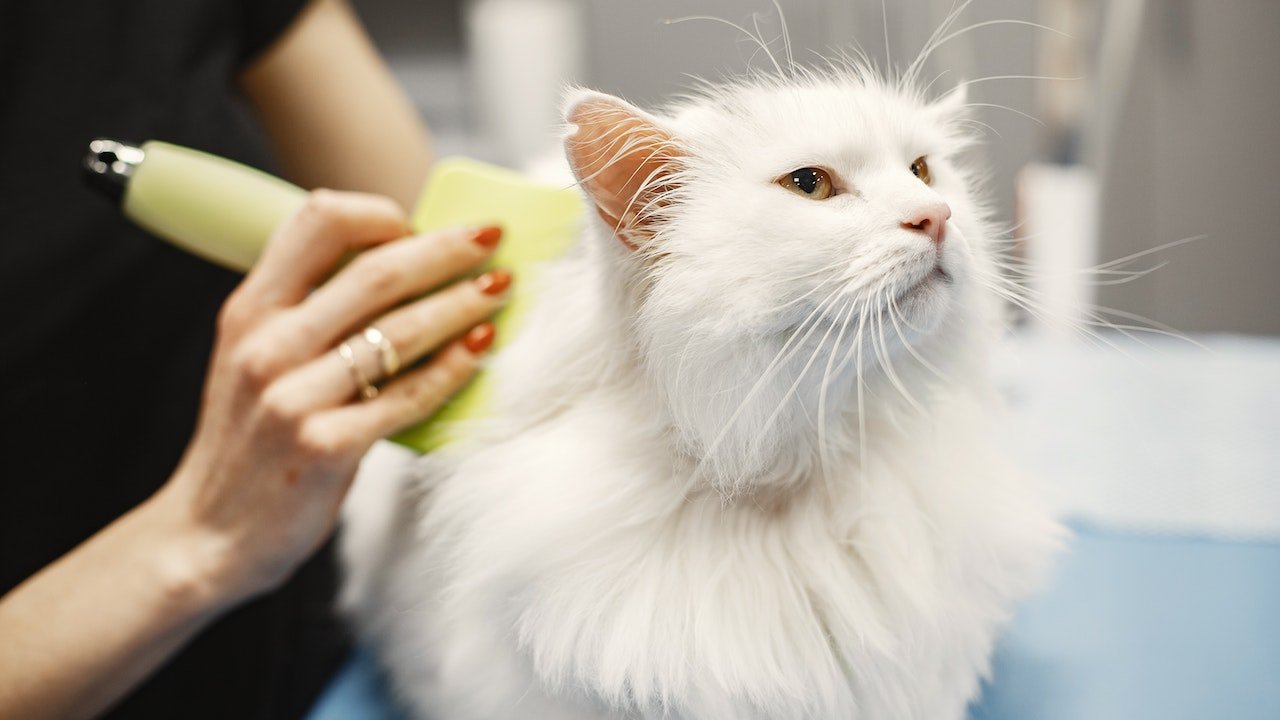Taking care of our pets involves more than just providing food and shelter. Grooming plays a vital role in maintaining their overall health, hygiene, and appearance. In this article, we will explore the importance of pet grooming, discuss essential grooming techniques, highlight the benefits of professional grooming services, address specific grooming needs for different pets, and provide useful grooming tips for pet owners.
Read More: Grooming Tips for Your Pet During the Summer 2023
Contents
- 1 The Role of Grooming in Pet Care
- 2 Importance of Pet Grooming
- 3 Definition of Grooming
- 4 Benefits of Regular Grooming
- 5 Grooming Tools and Supplies
- 6 Basic Grooming Techniques
- 7 Professional Grooming Services
- 8 Specific Grooming Needs for Different Pets
- 9 Common Grooming Challenges and Solutions
- 10 Grooming Tips for Pet Owners
- 11 FAQs
- 12 Conclusion
The Role of Grooming in Pet Care

Importance of Pet Grooming
Grooming is an integral part of pet care that involves maintaining their physical well-being. It encompasses various activities such as brushing, bathing, nail trimming, ear cleaning, and dental care. Regular grooming not only keeps your pet looking its best but also prevents common health issues related to poor hygiene.
Definition of Grooming
Pet grooming refers to the process of maintaining the cleanliness, hygiene, and physical appearance of pets. It involves practices that help keep their skin, coat, nails, ears, and teeth in optimal condition.
Benefits of Regular Grooming
Regular grooming offers numerous benefits to both pets and their owners. It helps to:
- Maintain a Healthy Coat: Brushing and combing remove dirt, debris, and loose hair, preventing mats and tangles. This promotes healthy hair growth and reduces shedding.
- Prevent Skin Problems: Regular grooming allows for early detection of skin issues such as dryness, rashes, or infections. It also helps distribute natural oils, keeping the skin moisturized.
- Keep Eyes and Ears Clean: Grooming includes cleaning the eyes and ears, reducing the risk of infections and discomfort.
- Prevent Dental Issues: Brushing your pet’s teeth regularly helps prevent dental problems like plaque buildup and gum disease.
- Monitor Overall Health: During grooming sessions, you can check for any lumps, bumps, or abnormalities that may require veterinary attention.
Grooming Tools and Supplies
Before starting the grooming process, it’s essential to gather the necessary tools and supplies. Some of the basic grooming tools include:
- Brushes and Combs: Different types of brushes and combs are available for various coat types. These include slicker brushes, bristle brushes, and shedding tools.
- Shampoos and Conditioners: Choose pet-safe shampoos and conditioners formulated for their specific needs, such as sensitive skin or fleas.
- Nail Clippers: Specialized nail clippers designed for pets to help trim their nails safely.
To choose the right tools and supplies, consider your pet’s breed, coat type, and any specific requirements they may have.
Basic Grooming Techniques
- Brushing and Combing: Regular brushing helps remove loose hair, prevents mats, and keeps the coat shiny and healthy. Use appropriate brushes for different coat types.
- Bathing and Drying: Use lukewarm water and pet-friendly shampoo to bathe your pet. Afterward, thoroughly dry them using a towel or a pet-specific dryer.
- Nail Trimming and Paw Care: Trim your pet’s nails regularly to prevent overgrowth and discomfort. Additionally, check and clean their paws for any debris or injuries.
- Ear Cleaning and Dental Care: Clean your pet’s ears gently using an ear-cleaning solution and cotton balls. Brush their teeth with a pet toothbrush and toothpaste to maintain good oral hygiene.
Professional Grooming Services

While basic grooming can be done at home, professional grooming services offer added expertise and convenience. Consider professional grooming for:
- Complex Grooming Needs: Some breeds require specific cuts or styles that are best handled by professionals.
- Specialized Services: Professional groomers can provide additional services like de-shedding treatments, teeth scaling, or flea and tick baths.
- Time and Convenience: If you have a busy schedule or lack the necessary equipment, professional grooming can save you time and effort.
When choosing a grooming salon, look for one with trained and experienced staff, a clean and safe environment, and positive reviews from other pet owners.
Specific Grooming Needs for Different Pets
Each type of pet has unique grooming requirements:
- Dogs: Dogs may need regular brushing, bathing, and occasional haircuts. Breeds with longer hair or hair that grows continuously may require more frequent grooming.
- Cats: Cats are generally self-groomers, but they may need help with brushing, especially for long-haired breeds. Regular nail trimming and dental care are also essential.
- Small Animals: Small animals like rabbits or guinea pigs may require occasional brushing and nail trimming. Ensure their living environment is clean and their fur is free from mats.
- Birds: Birds may need bathing to keep their feathers clean and healthy. Regular nail and beak trimming is also important for their well-being.
Common Grooming Challenges and Solutions
- Dealing with Shedding: Regular brushing and using de-shedding tools can help control excessive shedding. A balanced diet rich in omega-3 fatty acids can also improve coat health.
- Managing Mats and Tangles: Preventing mats through regular brushing is key. For stubborn tangles, use detangling sprays or seek professional help.
- Addressing Skin and Coat Issues: Consult a veterinarian if your pet experiences persistent skin issues. They can provide appropriate treatments and recommend suitable grooming products.
Grooming Tips for Pet Owners

- Establishing a Grooming Routine: Set a regular grooming schedule based on your pet’s needs. This helps them become familiar with the process and ensures consistent care.
- Handling Nervous or Fearful Pets: Introduce grooming gradually and use positive reinforcement, treats, and praise to make it a positive experience for your pet.
- Preventing Common Grooming Mistakes: Be cautious while using grooming tools to avoid accidental cuts or injuries. Seek guidance from professionals if you are unsure about specific techniques.
Read More: 9 Best Types of Pet Care Services and Professions in 2023
FAQs
- How often should I groom my pet?
The frequency of grooming depends on your pet’s breed, coat type, and individual needs. Generally, dogs with long hair or thick coats may require more frequent grooming than short-haired breeds.
- Can I groom my pet at home?
Yes, many basic grooming tasks can be done at home. However, it’s essential to learn proper techniques and use suitable tools to ensure your pet’s safety and comfort.
- What if my pet doesn’t like grooming?
Introduce grooming gradually and use positive reinforcement to create a positive association. If your pet continues to show aversion, consider seeking professional help or consulting a veterinarian.
- How do I choose a grooming salon?
Look for reputable grooming salons with trained staff, a clean environment, and positive reviews. Ask for recommendations from other pet owners or consult your veterinarian for suggestions.
- Are there any specific grooming requirements for puppies and kittens?
Puppies and kittens have specific grooming needs, including gentle handling, socialization during grooming, and using appropriate grooming products designed for their young age.
Conclusion
Grooming plays a crucial role in maintaining the hygiene and appearance of our beloved pets. Regular grooming helps prevent health issues, keeps their coats healthy, and allows for early detection of potential problems. Whether you choose to groom your pet at home or opt for professional services, prioritize their grooming needs to ensure they lead happy and healthy lives.




















